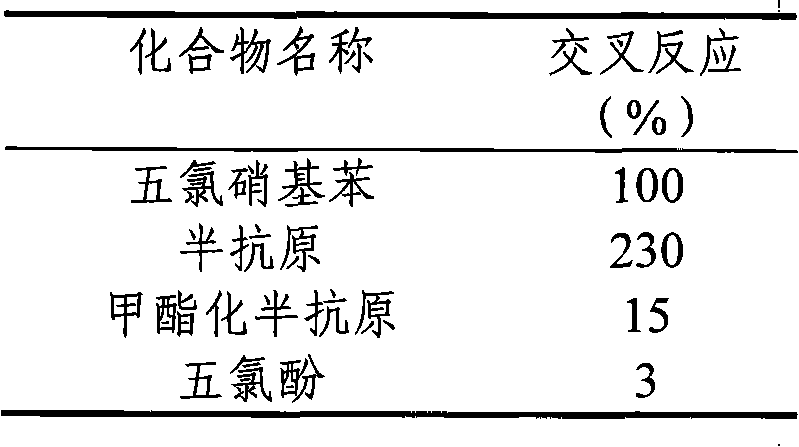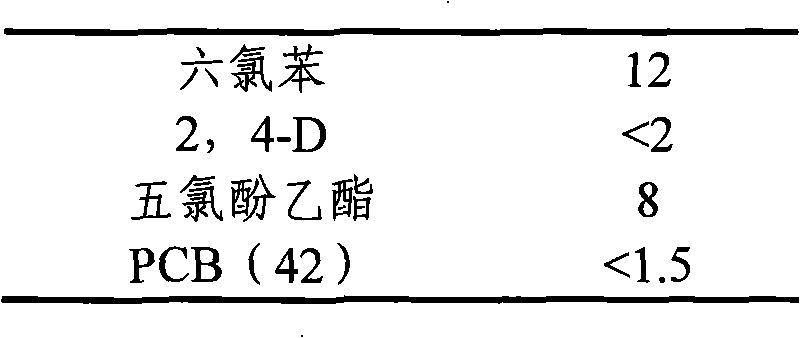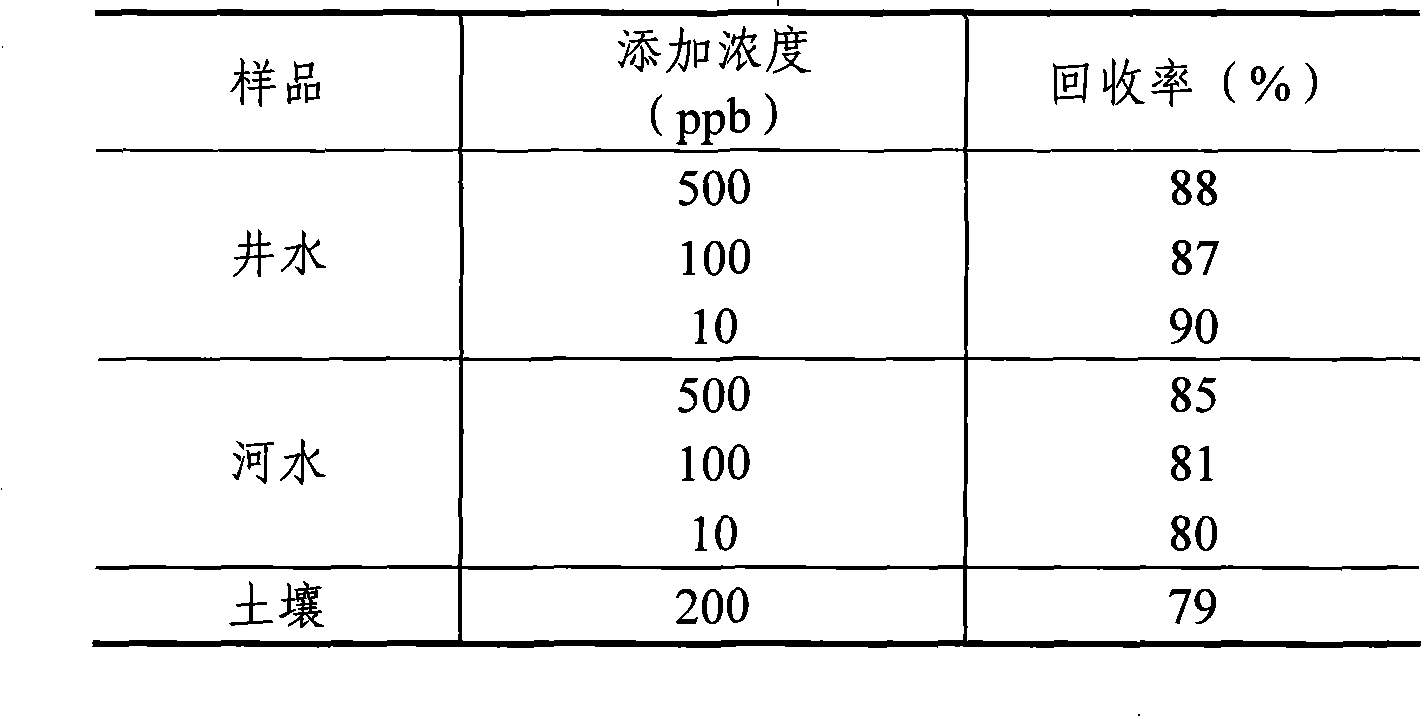ELISA kit applicable to residue analysis of terrachlor
A pentachloronitrobenzene and residue analysis technology, which is applied in the direction of analyzing materials, biological testing, and material inspection products, can solve problems such as environmental pollution, high requirements for instrumentation, and difficulty in adapting to requirements, achieving less time-consuming, The effect of simple pre-processing
- Summary
- Abstract
- Description
- Claims
- Application Information
AI Technical Summary
Problems solved by technology
Method used
Image
Examples
Embodiment 1
[0018] Embodiment 1 Kit operation and result calculation
[0019] After the samples to be tested were pretreated, they were made to volume with PBST for later use. Unpack the vacuum packaging bag and take out the microtiter plate, and equilibrate at room temperature for 5 minutes for later use. Prepare 0ng / mL, 10ng / mL, 50ng / mL, 100ng / mL, 500ng / mL, 2000ng / mL pentachloronitrobenzene standard solution, add 50μL standard sample or processed sample to each well, standard sample and Make 4 replicates of the sample, add 50 μL of diluted antibody, and incubate at 37°C for 30 minutes; pour out the liquid in the well, wash 5 times with diluted PBST, invert the plate on absorbent paper and pat dry; add 1: 100 μL of enzyme-labeled goat anti-rabbit secondary antibody diluted at 1000, incubate at 37°C for 30 minutes; pour out the liquid in the well, wash the plate 5 times with PBST, and pat dry; take equal volumes of liquid A and liquid B and mix, add to each well 100 μL, develop color at...
Embodiment 2
[0021] The synthesis of embodiment 2 haptens
[0022] Weigh 2g pentachlorophenol (pentachlorophenol, PCP) and 1gK 2 CO 3 Dissolve in 30mL acetone, add in the reactor, under the protection of nitrogen, add 1.14g bromopropionic acid, heat and reflux for 2 hours, then add 0.5g bromopropionic acid, keep the above conditions unchanged and react overnight (reaction The generated gas is passed into the NaOH absorption bottle for absorption). The organic solvent was evaporated under reduced pressure, the remaining substance was separated with concentrated hydrochloric acid and dichloromethane, the inorganic phase was discarded, and anhydrous Na 2 SO 4 After drying, the organic solvent was evaporated under reduced pressure, and purified by silica gel column chromatography to obtain the crude product of the desired hapten. Yield 50%.
Embodiment 3 5
[0023] Example 3 Pentachloronitrobenzene polyclonal antibody preparation
[0024] Conjugate the hapten with bovine serum albumin by the active ester method, dissolve 2mg of the conjugate in 1mL of normal saline, mix it with 1mL of complete Freund's adjuvant, inject it into the thigh of New Zealand big-eared white rabbit after fully emulsifying, and then inject it into the thigh of New Zealand white rabbit every other day Immunization was boosted once every two weeks, and incomplete Freund's adjuvant was used to mix with the immunogen. The immunization site was subcutaneous on the back of the neck. From the third immunization, blood was collected from the rabbit ear vein one week after each immunization to test the serum titer. A total of 5 times of immunization, the whole blood was collected from the rabbit carotid artery one week after the last immunization, and the rabbit antiserum was crudely extracted by 35% saturated ammonium sulfate salting out method, and finally purifie...
PUM
 Login to View More
Login to View More Abstract
Description
Claims
Application Information
 Login to View More
Login to View More - R&D
- Intellectual Property
- Life Sciences
- Materials
- Tech Scout
- Unparalleled Data Quality
- Higher Quality Content
- 60% Fewer Hallucinations
Browse by: Latest US Patents, China's latest patents, Technical Efficacy Thesaurus, Application Domain, Technology Topic, Popular Technical Reports.
© 2025 PatSnap. All rights reserved.Legal|Privacy policy|Modern Slavery Act Transparency Statement|Sitemap|About US| Contact US: help@patsnap.com



